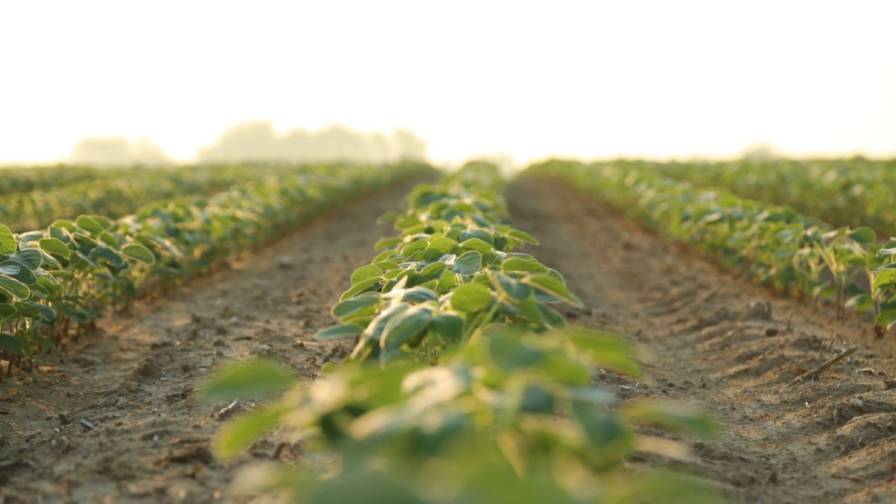Biologicals Are the Right Technology for the Right Time − Now
Agriculture is at an inflection point. The solution is biological.
Market and technology forces are converging to drive transformative change. Environmental concerns, rising costs, unstable supply chains, and consumer demands are intersecting with new, disruptive innovation to create a new model of how farmers grow and produce food.
If this feels familiar, it is. Thirty-some years ago I started my career in agriculture during the rapid adoption of seed-applied treatments, revolutionary new biotechnologies and global market forces that sparked dramatic changes in farming practices. When I think back, the impact of those technologies and how much they changed agriculture is astonishing.
After experiencing record fertilizer prices last year plus escalating regulatory and market demands for more sustainable farming solutions, agriculture is in the midst of another inflection point. But this time, biologicals are the agent of change.
Lessons Learned from Seed Treatments and Biotechnology
To set the stage — in the late 1990s the U.S. agricultural economy plateaued. The income and land values growers had started gaining back after the 1980s farm crisis stagnated with yet another decline in crop prices.
In this economic climate, newly developed innovation in seed-applied treatments and biotechnology was perfectly positioned to be the next boost to production and farm income levels. Adoption levels exploded and, consequently, farming practices changed.
Seed treatments combined with genetically modified cultivars let growers plant earlier and faster and at higher densities while controlling early-season above and below-ground pests and diseases, limiting their exposure to crop failure and locking in yield performance. The Roundup Ready gene gave growers the ability to move away from tillage for the sake of weed control and reverse soil erosion rates.
But high-tech performance came with a high-budget cost. Corn seed prices shot up by five-times and soybean prices doubled. Suddenly it made sense to invest in assuring every high-performance (and expensive) seed germinated and reached its maximum yield potential. Cue the advent of precision agriculture technologies like GPS-enabled guidance systems, GIS-driven crop yield maps, and variable-rate seeding and input applications. Precision-ag adoption sparked another dramatic change in production practices.
Ultimately, the market pressures plus innovations of the 1990s and 2000s led to fundamental practice changes that improved grower’s efficiencies. The U.S. agricultural total factor productivity rate grew roughly 70% between the mid-1990s and 2017 and today’s U.S. farmers grow more food with fewer resources than ever before.
Ag 4.0 Begins with Biologicals
Today agriculture is shifting yet again. Market forces, consumer demand, and agtech maturation are converging as never before – and biologicals are the agent of change.
As biologicals gain momentum and grower’s gain trust in their performance capabilities, we are moving past the old ‘snake-oil’ reputation and experiencing a growing momentum for science-backed biological solutions amongst large-scale growers. Indeed, a recent survey of U.S. row and specialty crop growers found that 20% of large farms will use or plan to use biostimulants in 2023 and 30% use or plan to use biofertilizers or biocontrols.
The reason why we’re seeing such rapid adoption is simple – high-performance biologicals uniquely solve the balancing act between grower profitability and farm sustainability.
Even with better-than-expected 2022 profits boosting farmer sentiment, high equipment, land, and input costs plus steep interest rates are dampening farmer’s expectations about future profitability. The USDA has an even dimmer outlook, forecasting a nearly 16% drop in 2023 farmer income over 2022 due to high production costs, decreasing direct government farm payments and falling crop prices.
Meanwhile, the entire supply chain is grappling with a new demand-driven sustainability paradigm forcing growers and buyers to balance profitability with meeting environmental targets fueled by regulatory requirements and Big Food’s climate-risk obligations.
Biologicals are the win-win answer to those problems.
Biofertilizers lower farmer input costs by unlocking soil nutrients while reducing nitrous emissions and nutrient leaching. Biocontrols can help break up pesticide resistance plaguing chemical crop protection products, letting growers potentially reduce pesticide use by offering biological alternatives for pest control. Biodigesters capture valuable nutrients out of crop residue while reducing field prep time but also lock atmospheric carbon into farmland soils and lower tractor-generated emissions. Biostimulants enhance plant tolerance to abiotic stress, acting as a seasonal insurance plan mitigating the increasing risk of yield-limiting events such as drought or heat waves.
But that’s just the beginning of the potential changes we’ll see. Every season since 2018 when DPH Biologicals was formed, we have discovered new, unforeseen benefits with biologicals. Most recently, the use of biological products as a ‘new’ soil carbon building practice, potentially qualifying previously in-eligible growers for lucrative carbon credit markets.
The biological technology and product development pipeline will continue to explode, exponentially so. And with continued development we can expect change.
What Comes Next?
We must maximize the potential of this inflection point.
Stakeholders in the biologicals sector must buckle down and focus on solving the roadblocks still facing our industry, like regulatory and industry marketing confusion, something we at DPH Biologicals are committed to solving.
Continued research, product development, and in-field verification are key. Now is the time to pursue collaborations between technology and commercial partners. Like the new planter box delivery systems and surfactant technologies released last fall that enhance biologicals efficacy through better delivery, making biologicals simpler for farmers to apply and more effective to use.
And, even though the process is long and expensive, biologicals must come with the appropriate federal and state registrations if we want to abolish once-and-for-all the snake-oil reputation and gain long-term industry trust. DPH Biologicals recently announced the EPA registration of our new biofungicidal seed treatment, BellaTrove Companion Maxx ST, one of just a handful of biological crop protection products to have received EPA registration.
The industry continues to ask manufacturers to more clearly communicate the standards and unique benefits of biologicals. DPH Biologicals recently released white paper “Improving Farm Profitability with Biofertilizers” and our “Biofertility ROI Calculator” are practical tools built on field-verified data, helping growers to understand how to use biologicals to improve per-acre profitability.
Bottomline, I am confident in the future of biologicals. Just like it’s hard to imagine farming now without the technologies of the 1990s and 2000s, growers will eventually look back at the changes biologicals are sparking and wonder – how did we ever farm without?






